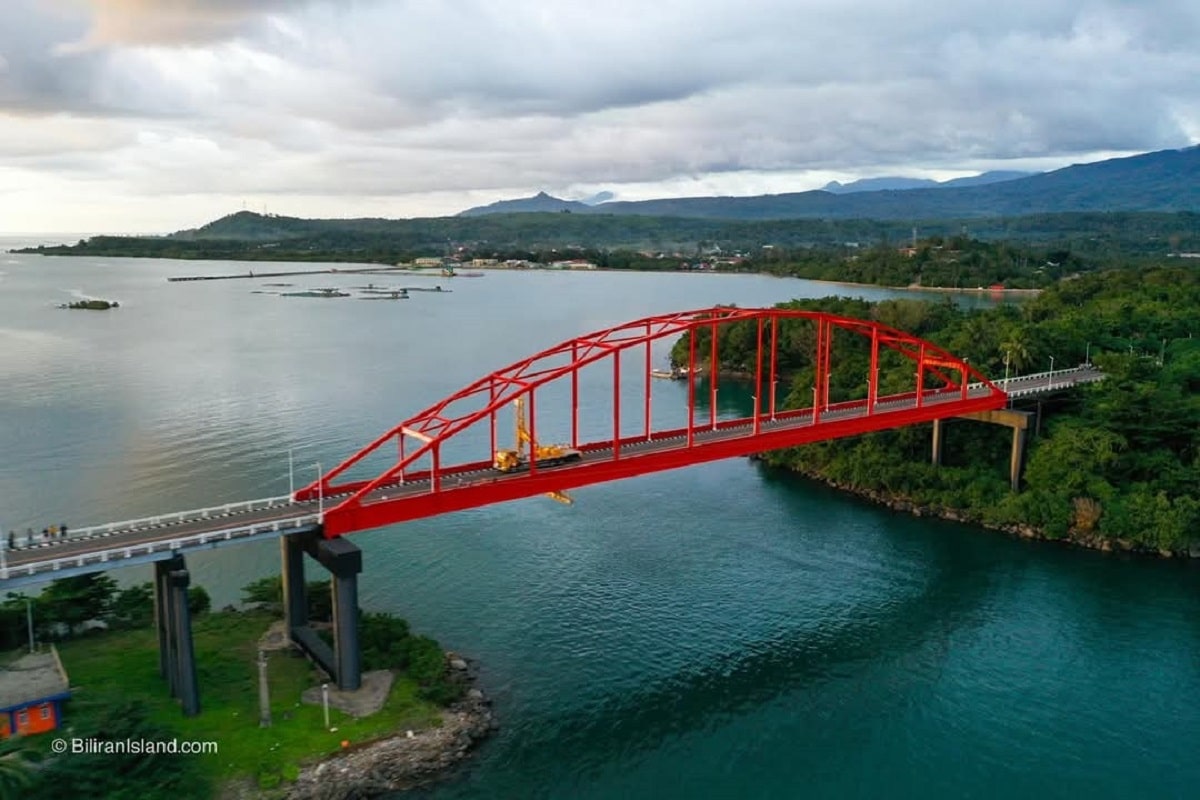
VITAL SPAN Biliran Bridge, a key span transporting goods and people between the islands of Biliran and Leyte, is found to have “structural defects” that need immediate repair, prompting authorities to limit load to only up to 5 tons while corrective work is ongoing. —Photo courtesy of Biliran Island/Facebook
TACLOBAN CITY, LEYTE, Philippines — Biliran has declared a state of calamity to prevent any sudden rise in prices while the bridge that connects the island province to Leyte was being repaired.
The declaration was passed by the Provincial Board during a special session on Dec. 27 after a technical team from the Department of Public Works and Highways in Eastern Visayas (DPWH-8) found “structural defects” on the Biliran Bridge.
Only light vehicles, or those that weigh 5 tons or less, can be allowed to pass following the bridge’s center lane.
READ: DPWH: ‘Swaying’ Biliran bridge safe for motorists
Since cargo and dump trucks carrying goods to the island were not allowed to cross the bridge, Biliran Gov. Gerard Roger Espina convened the Provincial Disaster Risk Reduction Management Council (PDRRMC), which he chairs, and recommended to the provincial board that a state of calamity be declared to minimize the impact on the local economy.
“The declaration of the state of calamity will help in controlling prices and access to the calamity fund for bridge utilization,” Espina said.
The 120-meter Biliran Bridge, constructed in 1975 to serve as the primary channel to transport goods, services and people between Biliran and Leyte, was caught “swaying” on Dec. 23 in a video posted on social media that immediately went viral.
The next day, Irwin Antonio, acting head of the DPWH-Biliran District Office, told reporters they initially did not find any defect but asked his regional office based in Leyte to conduct a thorough inspection and limited the bridge’s load to 20 tons.
‘Aerodynamic flutter’
The DPWH-8 later found the bridge suffered structural defects including damage on some components under the deck slab particularly on bridge stringers, steel cross bracing and built-up sections on span No. 4.
Loose nuts and bolts were also discovered on the same span during the inspection.
The structural defects were linked to a phenomenon known as aerodynamic flutter, caused by the resonance between gusty wind frequencies and the combined forces acting on the bridge, such as moving loads, wind pressure, and the bridge’s own weight, according to the statement released by DPWH-Biliran District Office.
Antonio explained the deterioration of the bridge’s stiffness was largely attributed to its age and corrosion of steel components due to prolonged exposure to sea breeze.
“Our office has recommended urgent major repairs to address these defects and ensure the safety and functionality of this critical infrastructure,” he stated.
The DPWH recommended that a barge be used to transport cargo trucks carrying essential goods, perishable items, and fuel.

